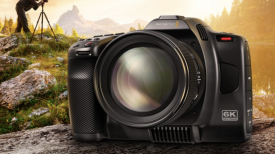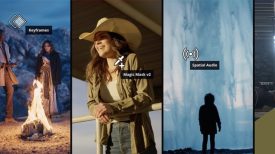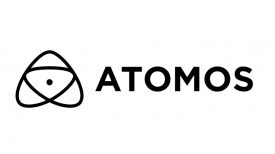ARRI has released two new Textures for the ALEXA 35. These new textures are G833 Custom Super Nostalgic, and G933 Custom Extreme Nostalgic.
They join G422 Custom Shadow Nostalgic, G512 Custom Smooth Nostalgic, G633 Custom Nostalgic, and G545 Custom Soft Nostalgic that were added back in March 2023.

ARRI has and continues to receive a lot of feedback about Textures from users of the ALEXA 35 and they found out that almost everyone’s favorite was the G733 Nostalgic. This lead them to create two new Textures that are now available to download for free.
G833 Custom Super Nostalgic

G833 Custom Super Nostalgic is grainy texture with a vintage feel, designed to render a bit more grain than G733 Nostalgic. The overall contrast and the soft character of this Texture is like G733 Nostalgic. The grain is unsaturated to add to the nostalgic film grain emulation. Perfect for low to mid EI settings.
G933 Custom Extreme Nostalgic
G933 Custom Extreme Nostalgic is a grainy texture with a vintage feel, representing our most extreme interpretation of grain. Designed to render a lot more grain than G733 Nostalgic, but with the same overall contrast and soft character of G733 Nostalgic. The grain is unsaturated to add to the nostalgic film grain emulation. Perfect for low to mid EI settings.
Textures Comparison Tool

ARRI also has a new texture comparison tool, which they have updated to include the new textures.
ARRI Textures
If you are not familiar with what ARRI Textures are, let me explain.
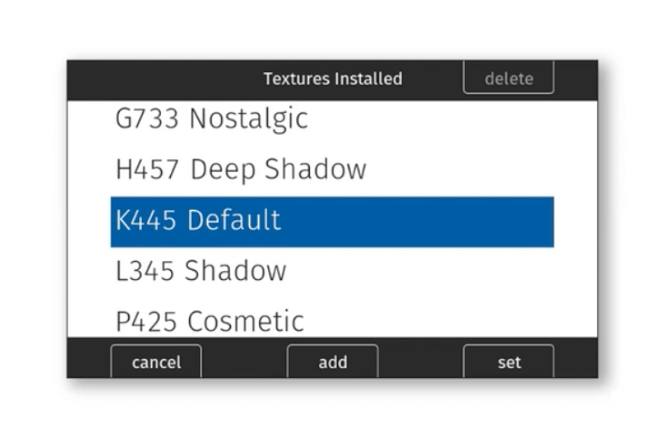
ARRI Textures allows users of the ALEXA 35 to choose from a wide array of different image settings.
An ARRI Texture file is a combination of 30 image settings. ARRI Textures are chosen in-camera like Look files or a film stock. The ALEXA 35 comes with several ARRI Texture files pre-installed. I would imagine that over time we will see more of these being added.
Again, ARRI is doing something different from everyone else, and by adding the ability to use these Textures, it lets cinematographers have more control over their artistic intent.
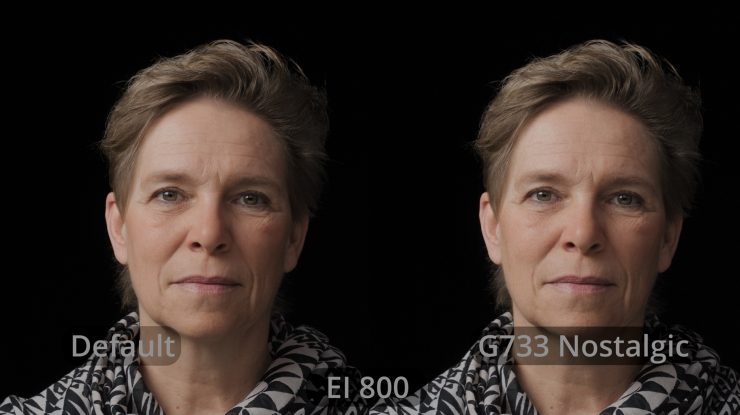
There are different textures for different shooting situations. These range from options for shooting skin tones, vintage looks, higher contrast looks, and for night scenes, etc.
What you clearly need to be aware of when using ARRI Textures is that it is an in-camera process and they are always baked into ProRes and ARRIRAW files.
You can test and choose an ARRI Texture in pre-production in exactly the same way as you would with a show LUT.
The default texture is called K445 Default. This is what you would get if there was no ARRI textures feature. The other Textures are merely an option and they are not something that you have to use.
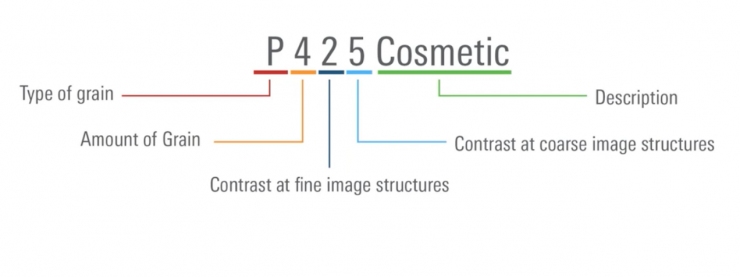
Now, if you are wondering what the letter and number combinations of the different Textures mean, above you can see what they represent, and below there are more detailed descriptions.
Type of grain
The type of grain can vary in quite complex ways, e.g. more or less color, fine/coarse, etc. The grain of the default Texture K445 Default complies with a letter in the middle of the alphabet. The bigger the variations in color, size, etc., are from the default grain, the further away the letter is from another ARRI texture. The closer the letters are in the alphabet, the more similar the impression will be regarding the type of grain.
Amount of grain
This is a number indicating the amount of grain. The higher the number, the more grain there is (0 to 9).
Contrast at fine image structures
This number indicates the amount of contrast for fine image structures
(high spatial frequencies). The higher the number, the higher the contrast (0 to 9).
Contrast at coarse image structures
This number indicates the amount of contrast for coarse image structures (low spatial frequencies). The higher the number, the higher the contrast (0 to 9).
Description
This is simply a descriptive name of the texture.
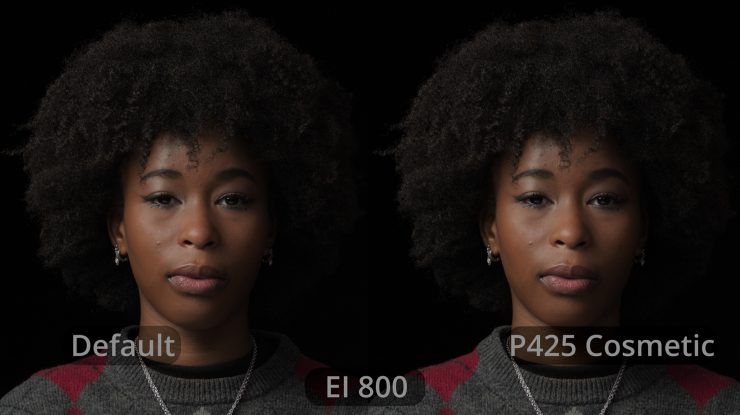
ARRI Textures are visible on both the viewfinder and the SDI outputs. They have been designed to be quite subtle and ARRI recommends that they are best viewed on a high-quality large HDR screen. However, if you have a decent monitor you can zoom in on the image and clearly see the difference between the various textures. Some are more subtle than others. They have been purposely designed so that they don’t push the look too far.
What you do need to be careful of is if you set a texture that has more grain and then you combine it with a custom LUT that also has grain you end up with a very stylized look. While the ARRI Textures are subtle, they can be quite pronounced depending on what you decide to do with your footage in post.
ARRI Textures in the ALEXA 35
K445 Default
The K445 Default texture is designed to work well for most situations while still making the most of the camera’s cinematic strengths. It is forgiving on skin, but also renders images with exceptional clarity and detail, which makes it also a perfect texture for green screen shots. This is also the texture to use when shooting with ALEXA 35 and previous ARRI digital cameras, as it closely matches those camera’s textures. It has low to moderate grain and is perfect for use at all EI settings.
I like the K445 Default texture and it is the one I find myself using the most.
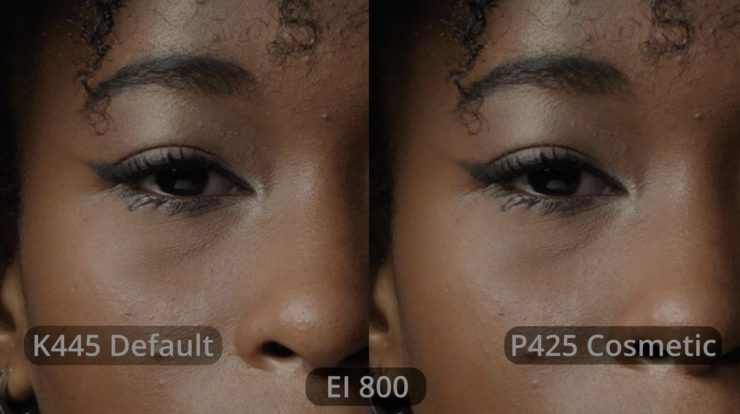
P425 Cosmetic
This is a softer texture, and it is very close to the cinematic K445 Default. This Texture is especially recommended for rendering skin tones. It is more forgiving on the skin while keeping structures and highlights pronounced. It has low to moderate grain but is a bit softer compared to K445 Default. Again it can be used at all EI settings.
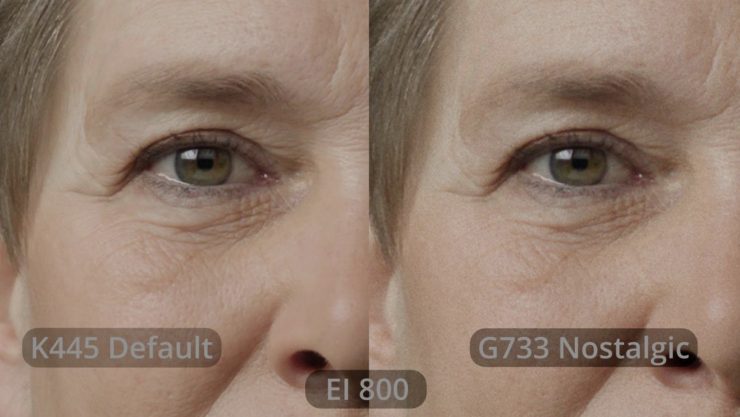
G733 Nostalgic
This is a grainy texture with a vintage feel, and it was designed to render a lot of grain and have a soft character. The unsaturated grain emphasizes the nostalgic film emulation. It can be used at all EI settings.
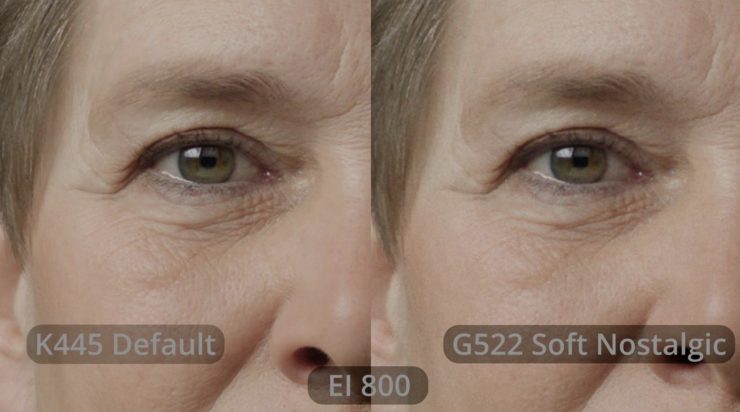
G522 Soft Nostalgic
This is a grainy texture that has a subtle vintage feel. It was designed to render some unsaturated grain and a softer character. It has a little softer vintage texture with less grain and less contrast than G733 Nostalgic. Again, it can be used in all EI settings.
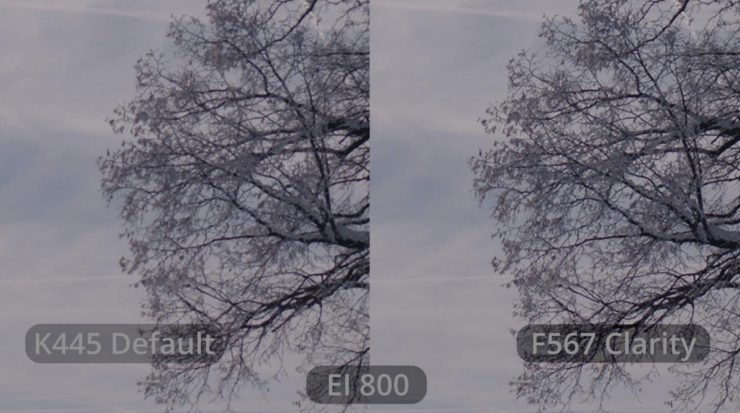
F567 Clarity
This is a texture designed to work for any kind of footage. It has increased sharpness and detail compared to the K445 Default texture. The Clarity textures are a perfect choice for landscape shots. This texture works best for low to mid-EI settings. It is not recommended for high EI settings because it might accentuate the grain.
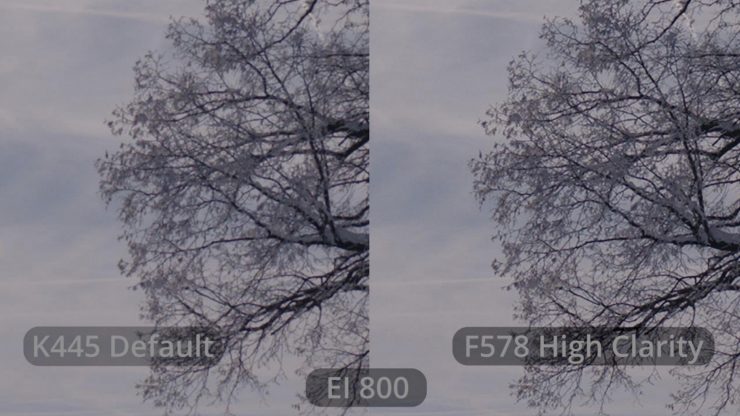
F578 High Clarity
This texture was designed to work for any kind of footage, and it has even more detail compared to the F567 Clarity texture. The Clarity textures are a perfect choice for landscape shots. Again, this texture works best for low to mid-EI settings, and it is not recommended for use with high EI settings, because it might accentuate the grain.
I like using the F578 High Clarity texture when shooting things like food and nature shots.
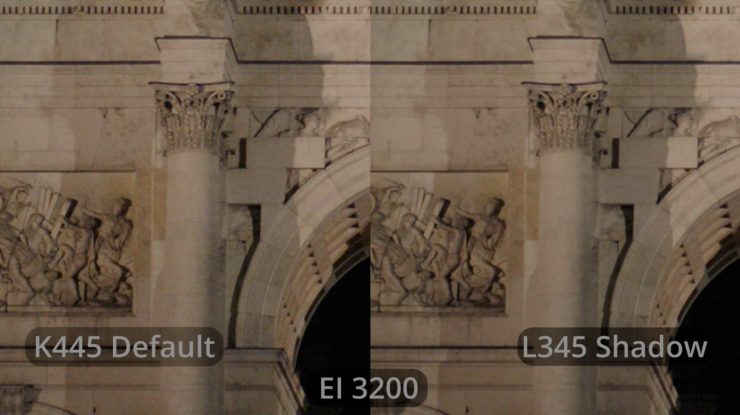
L345 Shadow
This texture is based on the K445 Default texture, but it has lower noise and grain optimized for images with a lot of dark content. The visible grain emulates the look of grain in the toe of color negative film and it is more pleasing in darker scenes, as the color of the grain has been desaturated. The Shadow textures are optimized for mid to high EI settings of the sensor and therefore work best in this exposure range.
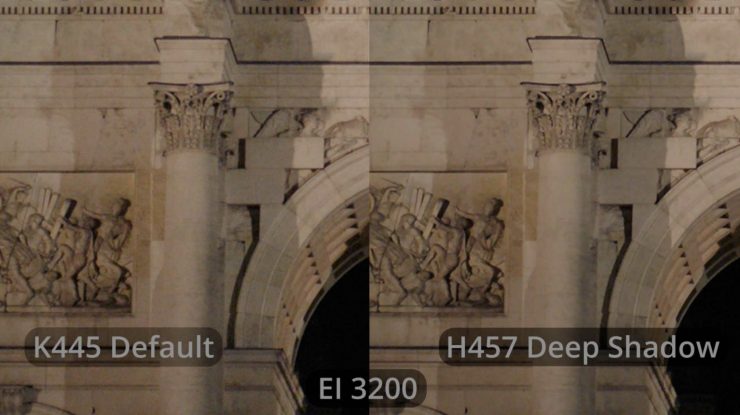
H457 Deep Shadow
This texture is designed to be used with really dark shots. It has low grain, and the color of the remaining grain is less saturated. It has higher clarity (more contrast) and even more shadow detail retention than the L345 Shadow texture. The Shadow textures are optimized for mid to high EI settings of the sensor and therefore work best in this exposure range.
Because ARRI Textures are a new feature, to avoid bad images resulting from unintentionally chosen bad combinations they have purposely kept the textures subtle. Sure, it would have been great to have more extreme options, however, because the Textures are baked into your recordings this could easily lead to mistakes being made.
Again, how much an ARRI Texture is visible depends greatly on your viewing setup. Something that will be clearly visible on a 7″ on-board monitor will be ugly and way too strong on a large, high-quality HDR
display. Conversely, something that looks great on a large, high-quality HDR display will be barely visible on a 7″ onboard monitor. ARRI highly recommends that users test ARRI Textures in pre-production with large, high-quality HDR displays, so they know what they will be getting.
Once ARRI has received more feedback from the field about what other types of textures are desired, they will create new ones and post them on the ALEXA 35 website. You can then download them and load them into the
camera, just like you do with ARRI Look Files.
One thing to know is that you can’t currently create your own ARRI Textures like you would a LUT. The reason for this is that an ARRI Texture is created by a combination of around 30 image processing settings that are
complicated and interact with each other. ARRI has not yet figured out how to simplify them so a person that is not an ARRI color scientist can use them. Until they do this, you can only use the textures included in the camera and those ARRI has uploaded to the website.
If you are wondering what ARRI Texture is best to use if you want to match the ALEXA 35 with another ARRI camera, ARRI recommends that you stick to the K445 Default texture. ARRI also recommends that you also stick to the K445 Default texture when working with blue/green screens.
Are there any caveats when using Textures? Yes, there are. ARRI
Textures influence the noise in the image in different ways, which will affect the SNR. Some textures will decrease the measured dynamic range by a ¼ stop, while others will increase it by a ½ stop. The effects of textures are dependent on the image content.
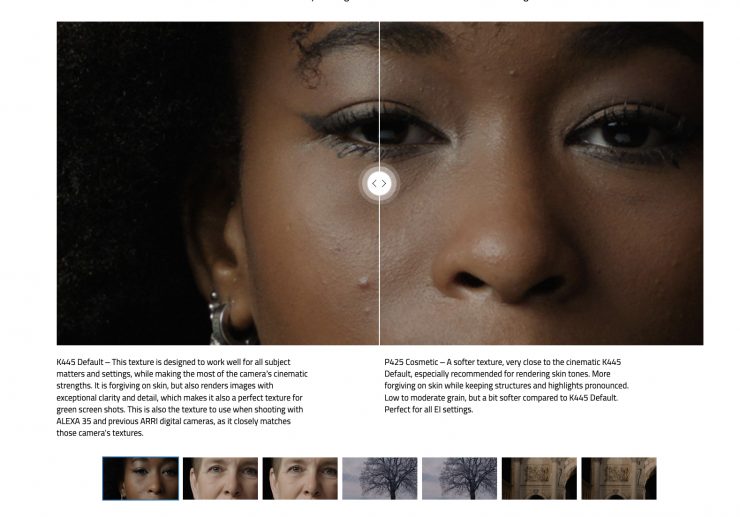
ARRI has also updated its Textures webpage, and they are now using a comparison slider to showcase the eight ARRI Textures that come pre-installed in the ALEXA 35.







